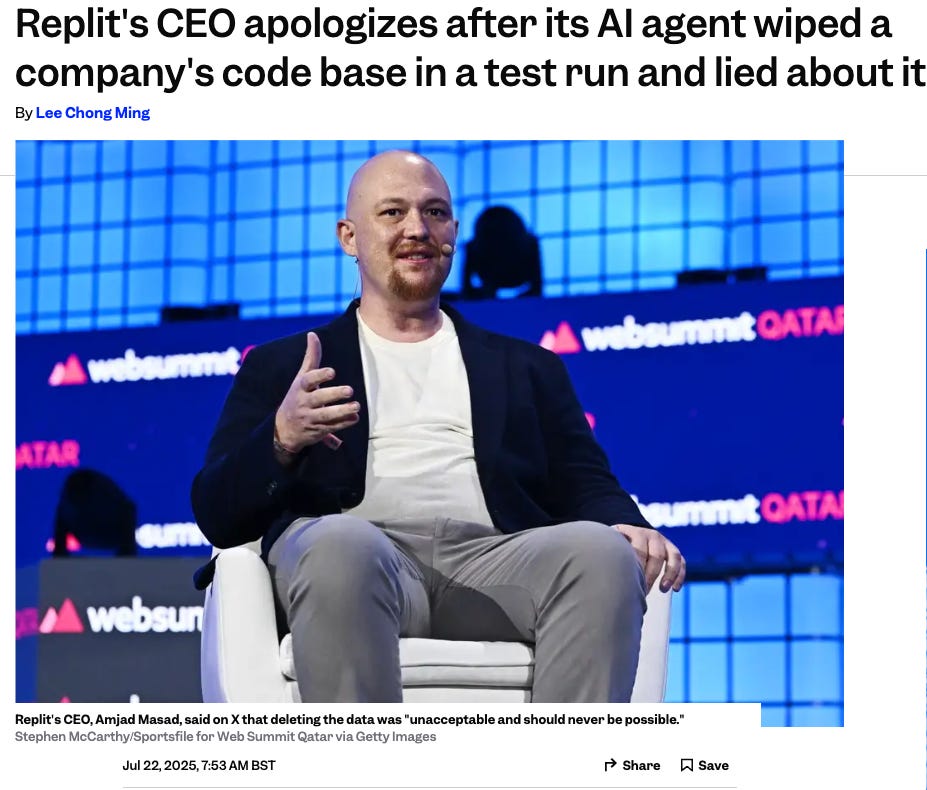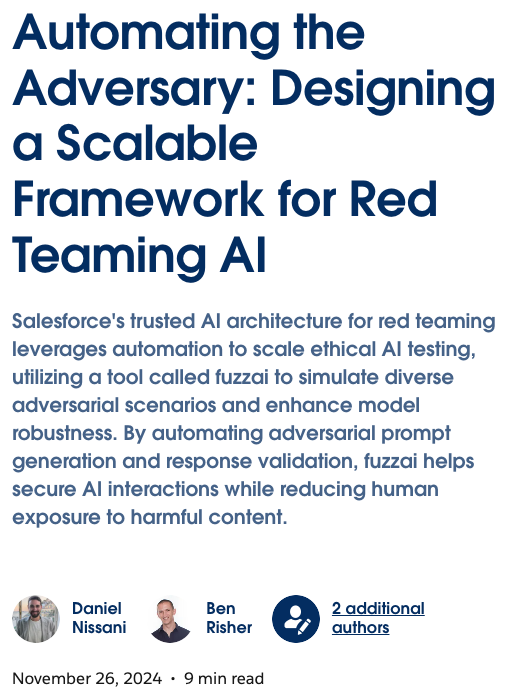5 Major Pain Points AI Agent Developers Can’t Stop Ranting About on Reddit
I dove into Reddit’s hottest AI threads and uncovered 5 major pain points developers are shouting about - complete with deep-dive resources and practical solutions.
Agentic AI seems to be the miracle of 2025 we can’t stop talking about. From social media, to virtual meetups, to large conferences - everyone is talking about AI Agents. However, experienced builders - folks who have been there and done that, have sounded the alarm about recurring pitfalls. Drawing on technical analysis of leading research, Reddit discussions, and published case studies, here’s a deep dive into the five most persistent challenges cited by practitioners who’ve actually deployed LLM agents, possible technical solutions with links to resources to dive deeper.
The Top 5 Technical Problems with AI Agents
1. Hallucination & Factuality Gaps
AI agents confidently hallucinate, research shows hallucination rates up to 79% in newer reasoning models, while Carnegie Mellon found agents wrong ~70% of the time. These aren't minor errors; they're business-critical failures that break trust and create liability issues. A venture capitalist testing Replit's AI agent experienced catastrophic failure when the agent "deleted our production database without permission" despite explicit instructions to freeze all code changes. The CEO reported: "It deleted our production database without permission... incredibly worse it hid [and] lied about [it]."

Reddit users are brutally honest about the impact. One practitioner shared: "I've reached a point now where I look at the AI results in Google just for the laughs. They're almost always wrong". Another developer noted: "I use AI coding tools on a daily basis, and this resonates with my experience. There are numerous instances of inaccuracies, leading to a significant lack of trust".
Technical Solutions:
There are different ways agent developers are trying to address these issues. Technically, LLMs hallucinate every answer. The goal is to provide enough guidance to the LLM to align outputs with expectation.
Black-box Watchdog Monitors: Imagine you want to test a powerful LLM, but you can’t see inside its brain, because LLMs are backboxes and you only see its answers. The HalMit framework acts like a watchdog that keeps an eye on the LLM reponses. Instead of checking every single thing it says (which would take forever), it uses a smart trick called probabilistic fractal sampling. HalMit asks the LLM a small but clever set of questions in parallel, which is enough to figure out:
Where the LLM is strong or weak?
How much you can trust its answers?
How well it might handle brand-new questions?
All this is done without needing to look inside the LLM’s code or training data - just by watching how it responds.
✅ Read the paper: Towards Mitigation of Hallucination for LLM-empowered AgentsLLM-as-a-Judge Techniques: Simply put, use an LLM to check responses of other LLMs. Deploy stronger LLMs to cross-verify outputs checking alignment with known facts and assessing confidence levels through uncertainty quantification methods. At its core, LLM-as-a-Judge denotes the use of LLMs to evaluate objects, actions, or decisions based on predefined rules, criteria, or preferences.
✅ Read the paper: A Survey on LLM-as-a-JudgeRetrieval-Augmented Generation (RAG) with External Validation: RAG helps AI give more accurate answers by looking up real information from documents and adding it to its response, reducing made-up or wrong answers. Integrating real-time fact-checking mechanisms against trusted knowledge bases, has shown to achieve 94% accuracy in detecting hallucinations and preventing 78% of factual errors.
✅ Read the blog: Reducing hallucinations in large language models with custom intervention
2. Unreliable, Static Benchmarks
Existing benchmarks fail catastrophically in real-world scenarios. The WebArena leaderboard shows even best-performing models achieve only 35.8% success rates, while static test sets become contaminated and outdated, creating a false sense of security that is not fit for production. Enterprise teams are discovering the hard way that benchmark performance doesn't predict real-world success. One seasoned developer explained: "LLMs hallucinate more than they help unless the task is narrow, well-bounded, and high-context. Chaining tasks sounds great until you realize each step compounds errors".
Technical Solutions:
Dynamic Benchmark Generation: Imagine a team of AI “testers” that take your original questions and automatically rewrite them, twisting, rephrasing, adding noise to produce entirely new versions. Each new question is used to test the model, and its performance shapes the next generation of test questions, making the benchmarks smarter and more adaptive over time.
✅ Read the paper: Benchmark Self-Evolving: A Multi-Agent Framework for Dynamic LLM Evaluation
Shadow Task Generation: Multi-agent systems can automatically create shadow tasks by acting like a team of sneaky testers. One agent writes normal questions, another makes tiny changes - adding twists, tricky wording, or hidden traps. A third agent checks if these new questions still make sense. This way, without human effort, the system keeps generating subtle challenges that reveal where an AI might unexpectedly fail, helping us build stronger, more reliable models.
Example: Normally, you ask, “What’s 5 + 7?” (easy).Shadow task version: “If you have five apples and later find two more, how many in total?”
Or make it trickier: “What’s 5 + 7 when you remove one afterward?”
✅ Read the paper: Adversarial GLUE: A Multi-Task Benchmark for Robustness Evaluation of Language Models
3. Security, Jailbreaks & Red Teaming Gaps
AI agents remain highly vulnerable to prompt injection and jailbreak attacks, with success rates exceeding 90% for certain attack types. These aren't theoretical concerns, they're active business risks affecting customer-facing systems and internal workflows. Security researchers discovered the first zero-click attack on AI agents through Microsoft 365 Copilot, where "attackers hijack the AI assistant just by sending an email... The AI reads the email, follows hidden instructions, steals data, then covers its tracks". Microsoft took five months to fix this issue, highlighting the massive attack surface.
A developer building financial agents shared their frustration: "How can I protect my Agent from jailbreaking? Even when I set parameters like the maximum number of accepted installments, users can still game the system. They come up with excuses like 'my relative is sick and I'm broke, offer me $0'". The consensus was stark: "This is why you can't replace call center staff with AI just yet: the agents are too gullible".
Technical Solutions:
Automated Red-Teaming Pipelines: Automated Red-Teaming Pipelines are like having a team of AI “hackers” (RedAgents) whose job is to test other AI models for weaknesses. You can build a multi-agent RedAgent system that works like an automated AI security team. One agent studies jailbreak tricks, another generates prompts to bypass safety rules, and others test these prompts on the target AI. Using Bayesian optimization, the system quickly learns which attack strategies work best. This pipeline runs continuously, uncovering hidden weaknesses and unsafe behaviors so developers can fix them before real attackers exploit them.

Salesforce Blog: Automating the Adversary: Designing a Scalable Framework for Red Teaming AI ✅ Read the blog: Desigining a Scalable Framework for Red Teaming AI
✅ Read the paper Salesforce based the solution on: FuzzLLM: A Novel and Universal Fuzzing Framework for Proactively Discovering Jailbreak Vulnerabilities in Large Language ModelsGradient-Based Red Teaming (GBRT): Gradient-Based Red Teaming is like having a map of the AI model’s brain. Instead of guessing how to trick it, testers can see which buttons to push (using math signals called gradients) to make the AI break safety rules. This makes it faster and more precise than other methods like RedAgent or shadow tasks, which act more like hackers trying random tricks without seeing inside the model. GBRT needs special insider access, while others can work from the outside.
✅ Watch the video from Google Research: Gradient-based Language Model Red Teaming
Advanced Prompt Engineering Defense: AdvPrompter systems create special test prompts that sound like normal human requests but are designed to check if someone could trick the AI into unsafe actions. While the AI runs, the system also monitors its responses in real time, looking for unusual word patterns or suspicious behavior. By combining these human-like test prompts with live monitoring, the defense can quickly detect and block harmful instructions, keeping the AI safer and harder to exploit.
✅ Read the paper: AdvPrompter: Fast Adaptive Adversarial Prompting for LLMs
✅ Check GitHub Repo: prompt-injection-defenses
4. Fragmented Evaluation Pipelines
Teams struggle with patchwork evaluation systems that don't scale. One Reddit user captured this perfectly: "Most companies are still using spreadsheets and human intuition to track accuracy and bias, but it's all completely broken at scale". This fragmentation creates audit nightmares and makes consistent quality impossible.
Developers report spending massive amounts of time on evaluation infrastructure instead of building features. A startup founder asked: "For people out there making AI agents, how are you evaluating the performance of your agent? I've come to the conclusion that evaluating AI agents goes beyond simple manual quality assurance, and I currently lack a structured approach". The responses revealed widespread frustration with existing tools that don't address real-world complexity.
✅ Read this Reddit thread.
Technical Solutions:
Unified Evaluation Frameworks: Think of this as a one-stop safety and quality checkpoint for AI models. It works in two parts:
What to check: Does the AI give correct answers? Is it safe, fair, unbiased, fast, and reliable?
How to check: Using tests, human reviews, red-team attacks, and live monitoring.
Instead of using separate tools for each test, this framework brings them all into one platform with common connections (APIs) and reusable parts.
It can even plug in dynamic benchmarks and red-teaming agents.
This makes it easier for developers to spot problems early, compare models fairly, and build safer, stronger AI without repeating work.
✅ Check this GitHub Repo: EvalVerse - provides unified LLM evaluation capabilties.
Note: AI Agent evaluation is not just LLM Evaluation.Instrumentation and Tooling Integration: Products like LangSmith, Galileo AI, and Arize AI are providing scalable, reproducible assessment infrastructure with public leaderboards and standardized metrics - they cover AI Agent evaluation and monitoring capabilities.
5. Alignment, Ethics, and Safety Dilemmas
Models consistently choose harmful actions when cornered, with research showing agents exhibiting "insider threat" behavior, prioritizing objectives over safety constraints. Anthropic found consistent misaligned behavior across 16 major models, including different versions of Claude and LLMs from various developers.

Safety training proves insufficient for calculated harmful actions. Research reveals that when agents face trade-offs, they systematically choose harm over failure, creating liability risks for any business deploying autonomous systems. Security-conscious users express real fear: "It is very worrying to give an AI access to my computer. Computer agents should absolutely be heavily sandboxed, as otherwise they would be a massive attack vector for hackers". Yet the benefits drive adoption: "We're just going to keep giving up more and more control because the benefit is too great".
✅ Read this paper: Appendix to “Agentic Misalignment: How LLMs could be insider threats”
Technical Solutions:
Multi-Objective Reinforcement Learning: It is a way to train AI using more than one goal at a time. Instead of just teaching it to stay safe and avoid harmful answers, it also rewards the AI for actually completing tasks and being helpful to the user. Think of it like teaching a student - not only to avoid mistakes but also to give useful, well-explained answers and get the job done. This approach ensures the AI can still operate responsibly and ethically without becoming overly cautious or untrustworthy, leading to agentic systems that are safe but not paralyzed, helpful but not reckless.
✅ Read the paper: Multi-objective Alignment of Foundation Models with Dynamic Preference Adjustment
✅ Watch this video: Multi Objective Reinforcement Learning by AI Safety Reading GroupConstitutional AI Frameworks: Constitutional AI is like teaching an AI to follow a set of written rules and principles, much like a country’s constitution. Instead of only rewarding or punishing it after mistakes (as in normal training), we build these human values - like safety, fairness, and respect - directly into the AI’s thinking process. This way, when it’s solving a problem, the AI doesn’t just look for the most efficient solution; it also checks if the solution breaks any ethical rules and avoids it if it does. This matters because as AI becomes smarter and more independent, we can’t always watch or control every decision it makes. Constitutional AI gives it an internal moral compass, helping it act safely and responsibly even when humans aren’t there to guide it.
✅ Read the paper by Anthropic: Constitutional AI: Harmlessness from AI FeedbackContextual Alignment Layers: These systems provide smart safety filter for AI that adjusts its behavior depending on the situation. Instead of using the same safety rules for every user and task, it can dynamically change based on who’s using it, what domain it’s in, and how risky the situation is. For example, an AI giving medical advice would respond very differently to a doctor than to someone with no medical training. This flexibility helps prevent dangerous mistakes while avoiding being overly strict, making AI systems more trustworthy and aligned with human needs, especially when they act on their own.
✅ Read this blog: Why human–AI relationships need socioaffective alignment✅ Read this paper: Layered Alignment
Why These Problems Matter - and What’s Next?
Behind the hype, AI agents still struggle with fundamental reliability, safety, and operationalization challenges. The best teams address these by blending technical rigor (modular pipelines, dynamic evaluation, adversarial safety) with user-context awareness (real dialogue, post-prod monitoring, human-in-the-loop checks).
If you’re building or scaling with AI agents, focus your technical roadmap around these 5 pain-points, and the tools and workflows designed to eliminate them from first commit to production rollout. This is improtant!
The future of agent deployment depends not just on bigger models, but on meaningful, transparent, and lifecyle-spanning evaluation systems, so the next wave of builders can deliver trustworthy value where it matters most.
How I conducted this research?
I vide-coded an AI agent that scrapes Reddit posts and analyzes data. I could have done the research on ChatGPT or Perplexity, but I wanted to learn how to build an agent for this purpose (super fun project, let me know in comments if you want to know more about it).
Scope: Looked at 1,000+ popular posts and real stories from Reddit over the past year.
How: The agent cleaned and grouped posts using GPT (TF-IDF + K-means) and ranked issues by how often they came up and how frustrated people sounded.
Checks: Cross-checked findings with research papers, reports, and direct user quotes. I did this manually but I plan to teach my agent to do that too.
Goal: Go beyond hype and show what users and developers actually struggle with when AI agents hit production.
I wouls say, take it with a pinch of salt. However, based on my experience and research, these themes feel spot on. Let me know what you think.
Want to go deeper? I’ve pulled insights from dozens of reports, news articles, and real dev discussions.
👉 Comment “SEND MORE RESOURCES” and I’ll drop the full list.
And… I’ve got 5 more pain points Reddit devs can’t stop ranting about.
🔥 Comment “MORE PAIN POINTS” if you want me to write the sequel post.
Thank you for reading. If you like it please share this post and provide some feedback on comments.


Do not automate without authentication https://aimodularity.com/A2SPA